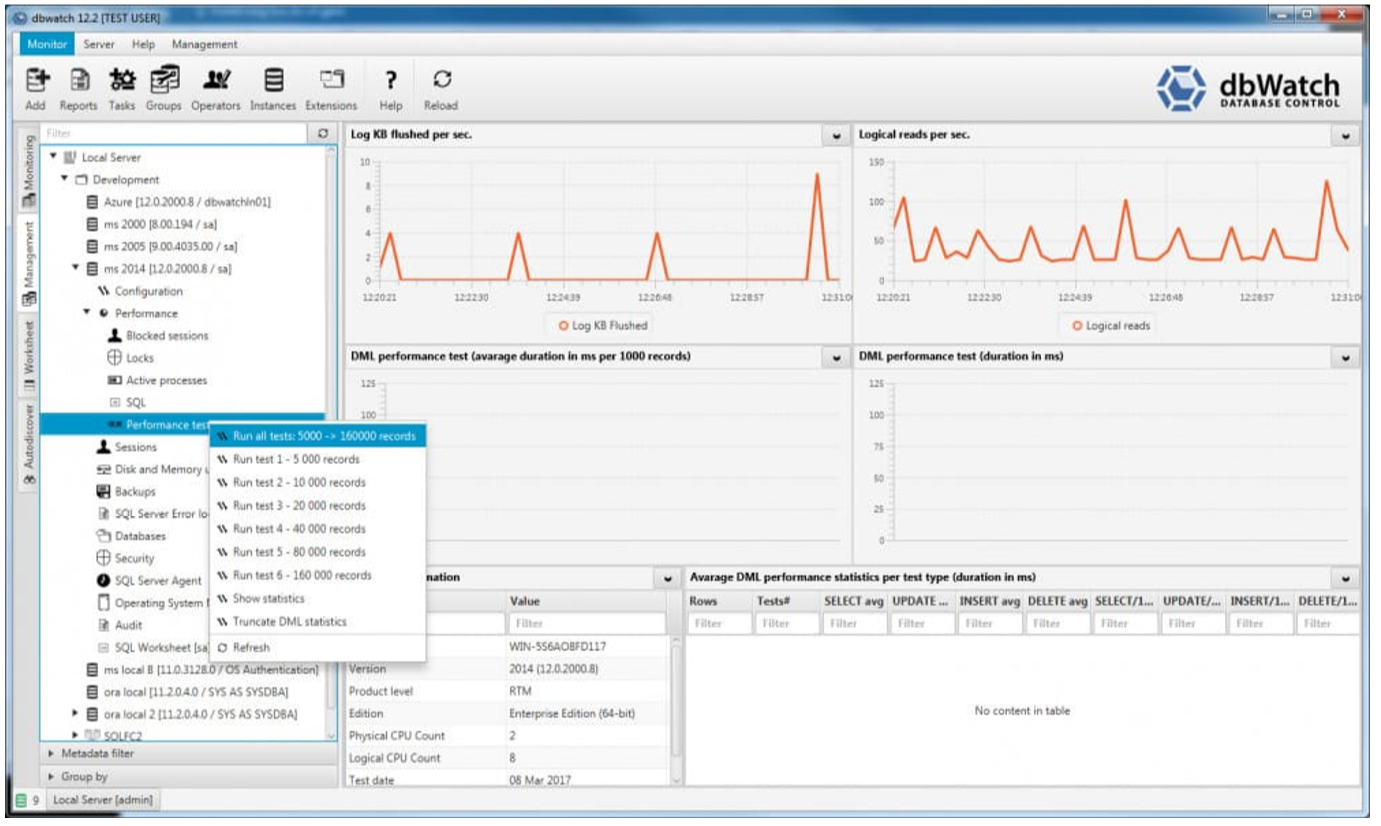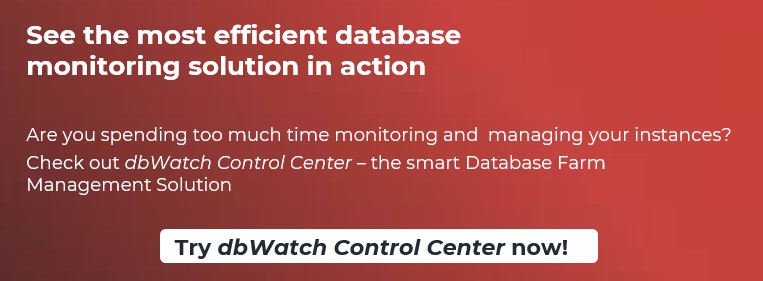Future proofing is part and parcel of any business strategy. You need to plan for your business to succeed. A noteworthy solution is investing in a flexible and reliable database monitoring tool. By investing into it, your staff is equipped with the means to increase the productivity and your business adapts to the changing landscape of your IT infrastructure. However, the process of future proofing does not end with just getting the right tool. The application of the tool and how it can add value to your business will merit your business longevity and success.
In this article, we will discuss what a database monitoring tool is, why future proofing matters and the applications of a data monitoring tool to your business are.
Tools For Growing Businesses
Future proofing plans are indispensable when a business is continually growing. As management plots the course for their company’s direction, the alignment of everyone and everything being on the same page becomes more important than ever.
A pragmatic approach for future proofing is equipping your IT staff with the right tools. In terms of database management, this enables them to handle the growing number of databases dispersed into numerous clustered instances.
As your business grows, your databases and servers will need to handle the additional strain.You can opt to upgrade your hardware resources or optimize your databases by horizontally or vertically scaling them. Either method will cope with the increase in demand but implementing them would be costly.
Under a data management tool,you get a more cost-effective solution when applying either or both methods. Financially, you will not needlessly implement hardware upgrades since it monitors the memory of your database and provides real-time health checks. Time-wise, it saves you the additional steps in cascading database optimizations and monitor all your database because you can do it in a single window.Won’t it be great if you can reap the rewards of your business venture without worrying about possible future headaches?
Flexible Database Management Software
Business growth is unpredictable. You are not 100% certain what your exact needs for your IT systems will be five years down the line. In that regard, flexibility of another key attribute when searching for the right database monitoring tool.
Future proofing reassures you that your business is prepared to what adversities may come. With a flexible database monitoring tool, you can grow your business the way you want.
Some database monitoring solutions are designed to work across multiple platforms and versions. This is great for businesses who are currently using multiple technologies or adopting a new database management systems or license.
Flexible tools that can work capable of working across multiple platforms and varying sizes of servers can be beneficial for your long-term business goals. Not only is your Return of Investment larger when you invest in a flexible database monitoring tool, you get the advantage of:
- 1. not needing to purchase different database tools,
- 2. preventing additional cost to train your staff in handling the tool
- 3. and decreasing the period of learning as your staff familiarizes themselves with the tool.
Evidently, there are numerous advantages and it can be package neatly into one database monitoring tool.
Application of Future-proofing
Growing, scaling and monitoring
There are two ways to of scaling. One of them is horizontal scaling while the other is vertical scaling. Traditionally, vertical scaling is a preferred method since it involves focusing on a single component and improving upon it. But times change and business are more attune to horizontal scaling because it’s more cost effective and flexible than its counterpart.
.jpg)
Whether you choose to implement vertical scaling or horizontal scaling, one thing is for certain - your databases will continue to expand. This is where a database monitoring tool comes in handy. For your monitoring solutions, the tool hides the complexity of deep diving into health checks and status displays. You don’t need to be a veteran DBA to understand this tool; the tool does the work for you. Even an amateur DBA can perform database monitoring without the need to repeatedly rely on SQL scripting.
When a downtime scenario happens, a database monitoring tool will be your reliable partner. It gives pinpoint accuracy on what and where the problem occurred. Even if your databases are not the cause of the issue, you can eliminate your databases as the possible suspect and move on in analyzing your servers. It saves steps in analyzing the root cause and saves your staff time. Potentially, you can recuperate losses faster brought about by a downtime and reassure your customers that they mean more as they go about the business.
But what if your database is the issue? Automation is our key word. Automating backups and real time analysis becomes your go-to options. As mentioned earlier, you get a real-time analysis of problems encountered. If your database is no longer viable, you have backups to be restored in multiple instances with only a press of a button.
Cost-benefit with hybrid environments
Moving into cloud-based environment is a good alternative for future proofing. Scaling becomes more convenient and quickly adapt to business demands. But, there’s a catch for adapting a cloud-based environment; it’s a pay-per-usage model. Unchecked resource utilization and vendor’s discretion on provisioning cloud databases will eventually be the bane of your business.
But this should not discourage you from integrating cloud to your business. Cloud services has their own unique advantages and by correctly utilizing them, you gain more value in the long run.

Database monitoring is one key ingredient in tracking your cost. By knowing your actual utilization of resources, cost can be efficiently reduced. Insights into acquiring additional resources or trimming down resources through cost-benefit analysis are unlock in a strategic level. While, database performance monitoring, even if it’s inside a cloud platform, benefits DBAs on the technical level.
You can proportionally balance the utilization of both cloud and on-premise. It is mostly up to the business on how they will hybridize their IT structure but with a database monitoring tool, these challenges are dealt with.
Aside from savings in your IT infrastructure, you also save on auxiliary costs for hybrid environments. You won’t need to shoulder the incremental costs of procuring additional licenses nor do you need to retrain your DBAs to familiarize with cloud platform databases. You save them hours of exerting extra effort so they can proceed with more relevant tasks. It’s a win for you and for them.
Multiple platforms in a single view
Database platforms offer differing advantages and disadvantages in their structure and performance. One platform could partition its layers into multiple instances while the others follow one instance and subdivided into schemas. There are also platforms that prevents cross database scripting while other openly embrace this feature. Whatever the case maybe, when a business decides to adopt one of the platforms and maintain an old one, this burdens the DBA even more.
Imagine a business deciding to transition to Postgres while retaining their MSSQL legacy database. The DBA will be forced to learn both database structure, limitation of their SQL languages and maintain both databases into two separate windows. But what if the business wants to try out Oracle then MySQL? This becomes problematic as you add more database platforms to your business.

Luckily, a database monitoring tool handles this job problem efficiently. The tool helps the DBA in monitoring all database across all platforms. Even with someone whose database knowledge is not proficient with SQL scripting or with the database management software, he or she can utilize the tool’s features to a great degree.
Without the need of accessing multiple database management software, a database monitoring tool can access several heterogeneous databases and consolidates their statuses into one window. This makes it easier to do health checks to your databases, optimize functions and stored procedures, and monitor the uptime of your databases.
Monitoring an Oracle, for instance, will be a lot easier since the tool hides the complexity of the standard DBA procedure of doing health checks and optimizations. Not only that, you can save up more in terms of licenses.
Usually, business tend to conclude that additional licenses are their only option to answer their growing demand in storing data. The alternative of hiring or directing their staff to gather utilization information on their databases is no different. It costs time and money. But, with a database monitoring tool, you won’t needlessly purchase additional licenses nor allocate significant manpower to the task. The tool does it for you.
Ultimately, your DBAs needs are met so as your business needs.
Customization creates clear communication
A report can only convey much information as needed. Having a very lengthy and thorough report can bombard your readers with unwanted information and even discourage them from continuing.
Customization is another aspect that is essential for a database monitoring tool. By customizing your dashboard, you can get the overview of database’s performance. When generating reports, you only provide the most important information management seeks. No need to have lengthy emails explaining the issue at hand. A visual graph will summarize it for you. This line of communication delivers transparency between your managers and DBAs.

Customizing your dashboard and reports brings salient and accurate information for management to decide on their future strategy. In addition, with visual facts at their disposal, DBAs can confidently and easily execute solutions.
Recommendations
To sum it all up, it’s very reassuring with a database monitoring tool at your disposal when you are future proofing your business. It creates that freedom of choice, convenience and cost savings. However, do not just settle for any database management tool. You need to also assess your company’s needs and what value the tool offers. To help you with your decision process, below are questions that you might want to consider:
- - Is this tool compatible with the database management system I am currently using?
- - Will this tool still be compatible even if I change my database management system?
- - Does this tool support major database management systems such as Oracle and Microsoft?
- - With this tool, can my staff perform in that same level of efficiency even if my business rapidly grows?
You may not have the answers now, but there will be a point in time you will need to answer them. It’s very hard to decide on what database monitoring tool to use. There are several products out there in the market. But starting now with a brand like dbWatch can help you go a long way.







